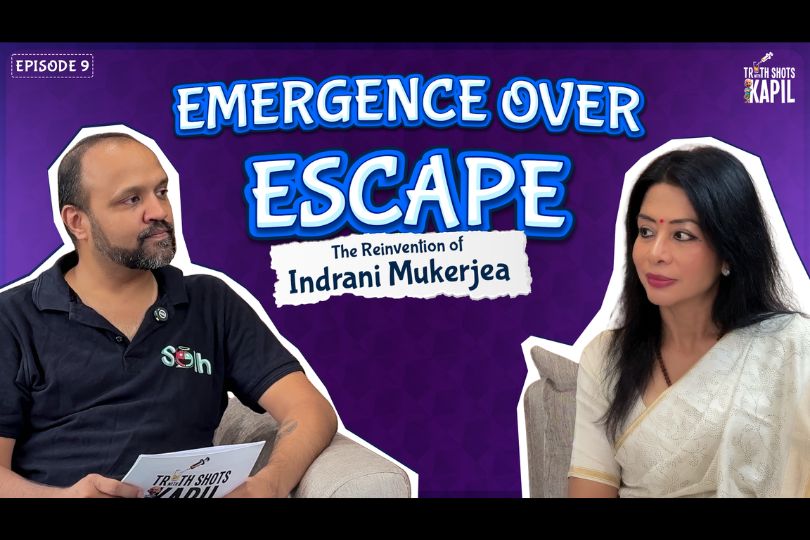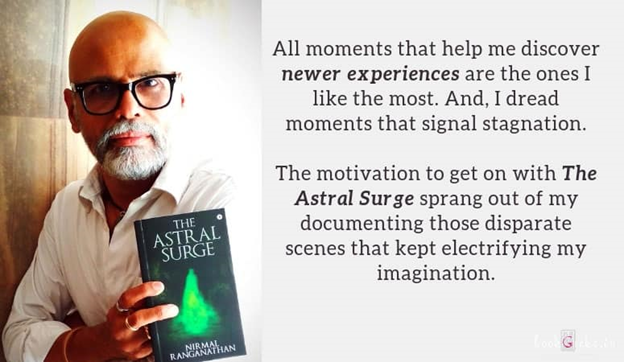Interview with Lalitha Balasubramanian, Author “ON THE KRISHNA TRAIL”
Interview with Lalitha Balasubramanian, author of "ON THE KRISHNA TRAIL," discussing her inspiration, journey, and insights on writing about Lord Krishna's life.on Sep 12, 2024

Lalitha Balasubramanian Is a Science graduate from Mumbai University and did her post graduation in Journalism from Bharatiya Vidhya Bhavan’s Institute of Mass Communication and Management. She also has a Gold Seal Diploma in Creative Writing from the Writers Bureau, Manchester. She worked in the Editorial Department of the Institute for Research in Reproduction for a few years, before switching over to Freelance writing. Over the years, she has contributed hundreds of articles on travel, education and health to reputed newspapers and magazines, which include the likes of Times of India and Discover India.
She is the author of six books, three mythological travelogues and three story books for children.
‘On the Krishna Trail’ is her most recent offering, based on the places and legends associated with Lord Krishna’s existence on earth. Her previous books include ‘Kerala the Divine Destination’ and ‘Temples in Maharashtra – A travel guide’.
Based in Mumbai, she is a voracious reader, compulsive traveler, nature lover and music and fine arts enthusiast.
Frontlist: What inspired you to write your book "On the Krishna Trail"?
Lalitha: The advent of Kalyug has resulted in warlike situations worldwide. Envy, greed, jealousy and mistrust have permeated every sphere of life, making the search for peace more pronounced. I firmly believe that faith and spirituality will help us transcend barriers and attain at least some level of peace and tranquility. I am a spiritual person and a staunch devotee of Lord Krishna, and when I expressed my desire to visit the sacred Braj Bhoomi, my husband prompted me to undertake the entire trail of Sri Krishna. It was while making travel plans that I discovered the paucity of information about the details of temple location, temple timings, legends surrounding the existence of important temples, the puja details, significant offerings and the way festivals are celebrated in different regions.
During the actual travel, I did encounter a few hurdles. I also had some exhilarating emotional and spiritual experiences that I wanted to share with my readers to soak them in the blissful path of self-discovery. The mystique of Sri Krishna, one of the most adored Gods of the Hindus, is such that it invokes love and reverence instantaneously. His devotees are everywhere. There are many going on a pilgrimage to some of these places for the first time. The inspiration or motive, therefore, to pen down this book, was the intention to provide an authentic travelogue cum guide for religious travelers wishing to embark on a journey to the places that had the privilege of being witness to Sri Krishna’s worldly existence, and imbibe the magical enchantment of following Sri Krishna’s temple trail.
Frontlist: Can you share your research journey for this book? What were some of the most surprising or profound discoveries you made during your travels?
Lalitha: As this book is in the non-fiction category, based on mythology, epics and travel, my focus is on proper research and authentic information.
I have a great fascination for Hindu mythology and have been brought up on the stories from the epics of Ramayana and Mahabharata. Additionally, I love travel. I have personally visited each of the 85 plus temples mentioned in the book. To add authenticity to the information, I spoke to the priests, the administrative officials and local residents. The 105 photographs in the book are all clicked by me on location. Before the travel, I did a lot of research to gain insights about the legends attached to the existence of these temples. I had amazing interactions with devotees who flock these temples in large numbers, which reinforced my belief that faith can produce miracles.
I also had some unexpected, yet profound experiences during my journey. The scene of everyone going down on all fours and crawling forward like a toddler to swing the jula of baby Krishna and the sight of devotees rolling in the mud because their Krishna had played in that same mud with his friends at Gokul was humbling to say the least. The entwined Tulsi trees at Nidhivan symbolizing the union of the Gopis with Krishna makes your hair stand on end, while the dandavat parikrama of Giriraj Govardhan reveals the indescribable faith of the devotees. At the Rukmini temple at Dwarka, it was interesting to note that the most important offering is Jal seva or donation for water. As a result of a curse, the land here is parched and dry. The most poignant moment of our journey was perhaps at Bhalka Thirth, where we could see the depiction of the Lord with an arrow pierced on his foot, magnanimously forgiving the hunter Jara who had mistakenly shot the arrow. I made another significant discovery during this journey. Every temple town on this trail of Sri Krishna is a Hari Hara Sthala. It has at least one temple, if not more, dedicated to Lord Shiva. This is probably based on the mutual adoration and admiration of Mahadev, who calls Sri Hari his Prabhu and Sri Krishna, who makes it a point to worship Lord Shiva before venturing on any important event.
Frontlist: How did you decide which locations to include in the book? Were there any places you visited that didn't make it into the final manuscript?
Lalitha: It was easier to follow the trail in a sequential order, starting from birth at Mathura, childhood at Gokul, Vrindavan, Govardhan and Nandgaon, education at Ujjain, reign in Dwarka, the battle at Kurukshetra, and exit from worldly existence at Prabhas in Saurashtra. Sri Radha’s Barsana plays a significant role in Sri Krishna’s life and hence I felt compelled to include it. I don’t think I have missed out on any place that I visited on the trail, but I had to leave out some temples as there are too many, especially in towns like Vrindavan.
Frontlist: Do you have any specific rituals or habits that help you get into the creative zone while writing?
Lalitha: I like to write in an undisturbed atmosphere, and that happens only at night after dinner or very early in the morning before anyone else wakes up. And yes! A cup of coffee is a welcome addition to my writing table.
Surprisingly, in this time of computers and digital media, I still like to put my pen on paper. I generally jot down my ideas in my diary, after which I expand it via the keyboard. For my nonfiction books, I also have the habit of drawing up a chapter-wise chart with significant points to be covered and time frame to complete that particular chapter.
Frontlist: With growing interest in spiritual tourism, how can we ensure that the spiritual essence of these sites is preserved while accommodating the increasing number of visitors?
Lalitha: There has been an unprecedented surge in spiritual tourism in our country in recent times. The infrastructure in the traditional temple towns has been overburdened with accommodating an increasing floating population, their stay, travel and other needs. The hospitality and transport sector have improved to a great extent in certain towns, thereby leading to greater accessibility and improved stay options. But infrastructure growth and construction activity have to be balanced with maintenance of the spiritual ethos of sacred sites.
Restoration and renovation of ancient temple structures should not disturb the history or architectural heritage of that site. In this context, popular temples can be given heritage status.
It is important to note that people visit religious destinations for peace and tranquility. Most of our temples exist in beautiful natural surroundings like mountains or river banks. Factories or manufacturing units that pollute the atmosphere should not be allowed to flourish near these sacred destinations. Tourists should also be educated about not polluting the environment with plastics and trash, and a strict curb has to be enforced by levying heavy fines.
Another significant thing to remember is that each temple is unique and follows its own system of pujas and offerings based on age old traditions and cultural heritage. Some even have dress codes. These cannot be tampered with and one has to respect them.
Frontlist: As Janmashtami approaches, how do you think books about Lord Krishna enhance our understanding of history and culture, and why is this important?
Lalitha: Books are an integral part of our culture. They reflect our beliefs, and serve as a platform to transmit stories, legends, mythology and knowledge from generation to generation. Our country is a fascinating amalgamation of region-based culture and tradition. One common factor in our cultural diversity have been the stories of Lord Krishna, one of the most loved Hindu Gods. They have been told and retold in almost every language and writers weave their own regional perspective, their customs and traditions into their narratives, providing valuable insights for the future generations. Hence, the importance of regional storybooks cannot be overemphasized.
One of the most influential and inspirational books of our times is the Bhagavat Gita, with Sri Krishna’s teachings on the reality of life, Karma and Dharma.
Children love Krishna, because stories depict him as a mischievous child and his lovable childhood pranks form the cornerstone of their understanding of him as one of their own. At the same time, they are taught the values of true friendship, love for parents and respect for gurus through his stories.



.jpg)






.jpg)

.jpg)
.jpg)
.jpg)

.jpg)
.jpg)

.jpg)










Sorry! No comment found for this post.